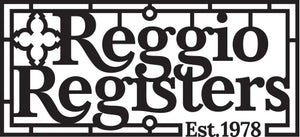Engineered Wood Flooring vs. Hardwood: Which Is Right for Your Space?
When choosing the perfect flooring, the debate between engineered wood flooring vs hardwood often takes center stage. Both bring warmth and timeless appeal to interiors, but they differ significantly in structure, performance, and versatility.
Whether you're a homeowner restoring a historic property or a designer curating a modern look, understanding the differences between wood vs engineered wood floors will help you make the most informed—and beautiful—choice for your space.
What’s the Difference Between Solid Hardwood and Engineered Wood Flooring?
Solid hardwood flooring is milled from a single piece of wood, offering enduring beauty and the potential to last for generations when properly maintained.
Engineered wood flooring, on the other hand, consists of a real hardwood veneer layered over a core of high-density plywood or fiberboard. This structure provides greater dimensional stability, especially in environments with fluctuating moisture levels.

Pros and Cons of Solid Hardwood Floors
Pros:
- Longevity & Refinishing: Solid wood floors can be sanded and refinished multiple times, lasting 50+ years.
- Timeless Aesthetic: Natural grain patterns and rich finishes add a luxurious, authentic touch to any interior.
- Increased Home Value: Traditional hardwood is a well-known real estate selling point.
Cons:
- Moisture Sensitivity: Prone to warping in humid or damp environments.
- Installation Restrictions: Not ideal for below-grade spaces like basements.
- Higher Cost: Material and installation costs are typically higher than engineered options.
Pros and Cons of Engineered Wood Flooring
Pros:
- Moisture Resistance: More dimensionally stable than solid wood, making it suitable for kitchens, basements, and bathrooms.
- Versatile Installation: Can be glued, nailed, stapled, or floated over various subfloors—including concrete.
- Sustainable Use of Wood: Uses less solid hardwood per plank, reducing waste.
Cons:
- Limited Refinishing: Thinner veneer means some engineered floors can only be refinished once—or not at all.
- Lifespan Varies: High-quality engineered floors last decades, but lower-end options may show wear sooner.

Wood Flooring vs Engineered: Which Should You Choose?
The right flooring depends on your lifestyle, budget, and location:
- Choose solid hardwood if you're investing in a long-term space, want a floor that can be refinished multiple times, and are installing above-grade.
- Choose engineered wood if you need more flexibility with installation, live in a humid climate, or want a similar look with more moisture resistance.
And if you’re customizing vent covers to match your flooring, it’s important to note that surface-mounted vent covers only be installed on engineered wood floors; they cannot be flush-mounted.

Frequently Asked Questions
Is engineered wood real wood?
Yes! Engineered flooring has a top layer of genuine hardwood bonded over plywood or fiberboard. It's real wood—just built differently for stability.
Can engineered wood look like solid hardwood?
Absolutely. High-end engineered floors are nearly indistinguishable from solid wood, offering similar grain, texture, and finish options.
Which is more durable: hardwood or engineered wood?
Solid hardwood can be more durable long-term due to refinishing capabilities. However, engineered wood may outperform in moisture-prone areas.
How Reggio Register Complements Your Flooring Choice
At Reggio Register, we know that floors are more than just what’s underfoot—they’re the canvas for every other design decision. Whether you're laying down classic oak planks or wide-plank engineered walnut, our vent covers are designed to blend seamlessly with your style and stand the test of time.
✔ Made in the USA with premium materials
✔ Custom sizes, finishes, and patterns available
✔ Perfect for both engineered and solid hardwood flooring
Explore our wood vent covers to elevate your next flooring project. Talk to our expert representatives if you need a custom wood vent cover.
Ready to match your floor with a vent cover that lasts a lifetime? Contact our expert team to get started on your custom order.




